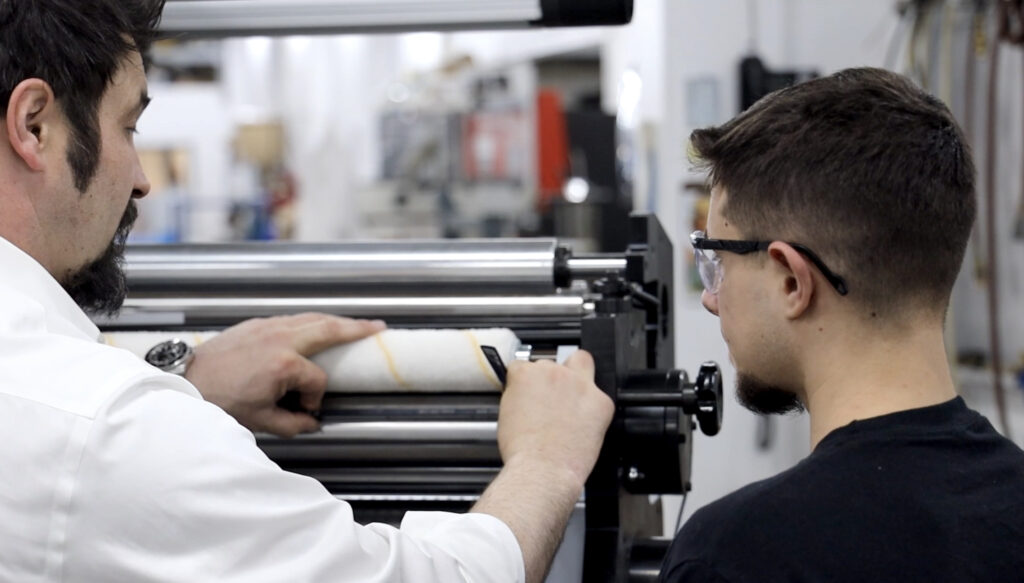Die cutting industries machines are used in many different industries to perform a variety of cutting, forming, and shaping different materials and substrates. Die-cutting machines are used in the packaging industry to cut and shape various types of corrugated and cardboard.
Manual Versus Automatic Die Cutting Machines
There are different types of die-cutting machines and the majority of die-cutters today are automatic instead of manual. Manual die-cutting processes are labor-intensive, slow, and tedious, while automatic die-cutters are efficient and result in higher productivity. Two of the most popular types of die-cutting machines for packaging are flatbed and rotary die-cutting machines.
Die Cutting for Package Making
Die cutting is an important part of the package-making process and web finishing applications where basic packaging or decorative boxes are created in one pass. The packaging industry uses die-cutting machines incorporated with folders, gluers, and printers to create custom boxes and packaging.
Flatbed Die Cutting Machines
Flatbed die-cutting machines are also called platen or clamshell, as the die is in a fixed position while a plate is pressed into the die to cut the predetermined shape. Flatbed die-cutting machines can be controlled by hydraulic, electric, manual, or pressurized sources.
- Flatbed die-cutting advantages:
- Ability to cut large pieces of material
- Cuts thin or thick materials, roles, and sheets
- More affordable than rotary die-cutting machines
- Cuts shapes close together to reduce material waste
Flatbed die-cutting disadvantages:
- Takes longer to set up
- Slower operation than rotary, less efficient
- Less precision than rotary provides
- Cannot do lamination, perforation, or printing
Flatbed die-cutting machines are efficient for various projects with different shapes, particularly for low-volume jobs or where the curvature of material is not required.
Rotary Die Cutting Machines
Rotary die-cutting machines work well on thicker corrugated and cardboards and feature a cylindrical die. A series of accurate and fast cuts are made as sheets of material are fed through the machine.
Rotary die-cutting advantages:
- Multifunctional to laminate, perforate, and print
- Performs kiss cutting to leave any paper backing intact and cut through front material with high precision
- Performs higher precision cutting and flatbed
- Increases productivity and reduces material waste
Rotary die-cutting disadvantages:
- Cannot cut dense and thick materials as well
- Can only cut material on rolls, not on sheets
- Set up, dies, and tooling are more costly than flatbed die cutters
- Narrower working with than flatbed, cannot cut wide materials
Tamarack® Products Offers Packaging Die Cutting Solutions
It is critical to source your packaging die-cutting equipment from a reputable manufacturer to ensure quality machinery and service. Tamarack® Products has more than 50 years of experience in engineering and manufacturing equipment used in the form, label, and packaging industries. We offer modular and scalable solutions with customized equipment designed to meet your exact specifications for patching, gluing, and die cutting.
We offer solutions for window patching, RFID inlay insertion, and a wide variety of value-added elements like plastic films, metallic foils, and more. Our Vista® Window Patcher in-line window patching equipment provides solutions for both short-run and high-volume folding carton jobs. Efficiently affix rigid windows, susceptor patches, liners, and more for specialty cartons.
Tamarack® Products differs from other suppliers of in-line and off-line finishing equipment with our decades of experience and in-depth technical expertise. We design, engineer, and manufacture high-quality equipment combined with exceptional service, including equipment installation and training. Contact us with any questions and to learn more about improving your die-cutting for packa





